Interview with Keiko Onodera, who is also in charge of editing 'Sorcerous Stabber Orphen Hagure Journey Kimrak', what kind of work is 'editing' of animation

We have interviewed several staff members toward the start of the broadcast of ' Sorcerous Stabber Orphen Hagure Journey Kimrak Hen '. The last is an interview with Keiko Onodera, who is in charge of 'editing'. Mr. Onodera has been 'editing' for nearly 40 years since the film era, so I asked him about various stories not only about this work but also about the work itself of 'editing'.
TV anime 'Sorcerous Stabber Orphen Hagure Journey Kimrak Hen' Official Website
GIGAZINE (G):
I look forward to working with you today.
Edited by Keiko Onodera (hereinafter referred to as Onodera):
Please. I just happened to finish the work. As you may know, our work is not always completed, for example, there are still line shots even though the dubbing has already been completed. I will replace this with the finished material. Most of the time, I work with lines only, rather than colored pictures.

Onodera:
In the case of Orphen, everyone has done their best in the Kimrak edition, and we are able to work in color. 'Let's make a beautiful color for dubbing', so with this number of stories, if you replace 3 cuts, the color one will be in time for dubbing. It's in pretty good condition. Normally this is not the case.
(Everyone laughs)
Onodera:
I've been doing it for about 40 years since the days of film, and it can be difficult and good to be digital. That said, it's been over 20 years since it became digital (laughs).
As for the work, editing is the work of adjusting the scale. In the case of Orphen, the main story is 20 minutes and 30 seconds, but the material does not go the same every time, and the scale is decided according to the content. Most of the time, it's over, and sometimes it's over 3 minutes.
G:
If it is over 3 minutes compared to 20 minutes 30 seconds, it is quite long.
Onodera:
The work of cutting lines, connecting actions, and increasing the tempo will be done at the editing stage while consulting. In the case of animation, there is dubbing after, so sometimes I will fix it after the lines are added in the dubbing. It would be nice if the picture was in color, but if it was a line art, it would be difficult for the acoustics to prepare it, so for the sake of clarity, I would put a mark such as 'I'm moving here' or 'SE will be included'.
G:
The editor does that too.
Onodera:
So, we are overwhelmingly difficult (laughs) For example, in a color picture, you can see at a glance that you are walking in such a place. You can tell by the color whether the material at your feet is a wooden board or a stone. However, there are times when you cannot tell what the material is from line art alone, whether it is dark or bright in the first place. For Mr. Acoustic, I don't understand 'Does the sound reverberate?' I work so that I can understand that, so it's a little difficult for editing to work with line art.

G:
Ah, I see.
Onodera:
In line with the director's idea that 'the timing of the footsteps is like this', we will make it possible to understand in what frame and in what frame the footsteps will be inserted. I always do that in the reality of animation today. Most editors, not just me, put out a scale on the day of editing and do dubbing so that they can hear the sound for subsequent preparation. Alternatively, you can do the work of replacing it with the picture that came up many times. Thankfully, the Kimrak edition is in color, but in the first phase, there were some parts that weren't in color, so I had a lot of line-shooting work.
G:
There was a story earlier that it was over 3 minutes with respect to the scale, but there are cases where the scale is not enough and it is extended ...
Onodera:
Not limited to 'Orphen', of course, there are times when it is not enough. After all, human beings do it, so directors and veterans also do calculations in their heads when drawing conte, but I thought it was good and said, 'I was over at this scale.' Even so, there are cases where the action is cut off too much when the tempo is set by editing. When I try to connect them, they are doubled, 'I should eliminate this place and do it quickly', or even if the animation director works hard and moves it, 'It is better to be faster'.
G:
Hoho.
Onodera:
In the action scene, there are some parts that you want to extend in order to adjust the speed. Then, the cut that the director thought 'this is 10 seconds' will come out as 'Isn't it better to make it 15 seconds?' As with TV and movies, we are competing against the shaku. It doesn't mean that you can do as much as you can, and broadcasting should not be over even one frame, so I pay the most attention to it. Besides, it wouldn't be interesting if everyone did their best, but it ended up in the form of 'what happened?'
G:
Yes.
Onodera:
I think it's the job of editing to create a place to show, a place to make you cry, a place to laugh, and a place to take action at a good tempo. Sometimes you have to make it longer, and sometimes it becomes uninteresting if you cut it. However, there are some formats, so I'm also thinking about extending them to fit the format.
G:
When you over, you have to cut somewhere, but when you extend it, how do you extend it?
Onodera:
That's right. We are a 'cut and pasted' business, and now that it is digital, we can quickly insert a stop frame, but there are places where we want to extend it. I work while reading the lines, but even in the conversation scene that came up according to the sheet that the writer and the director thought, when I actually read it, the interval became unnatural, 'This The character speaks more slowly, doesn't it? ' I skillfully poke and extend such parts, and ask the director, 'Let's make this cut, bread longer, and change the sheet to make the situation look a little longer.' Of course, the director may postpone, 'Let's put more time here.'
G:
Hoho.
Onodera:
If you trim it too short, you may want a longer one. Even if you are watching a drama or a movie, I think that you may go crazy and ask, 'What happened to you a while ago?'
G:
Yes.
Onodera:
It feels like it's slowing down and sharpening. In the case of Kimrak, it's a story that approaches the mysterious part so far, so I'll take a closer look at that mysterious part. As the mystery is being solved, if you talk about something like 'Why did this person get into this state?', It would be better to relax, so I will postpone that. For the most part, the director has already lengthened that part. So, in the case of the over-the-top example, I think that it was extended by thinking that 'longer is better'. I put it together well with the director and the director. It's a fun job, if you have a picture (laughs)
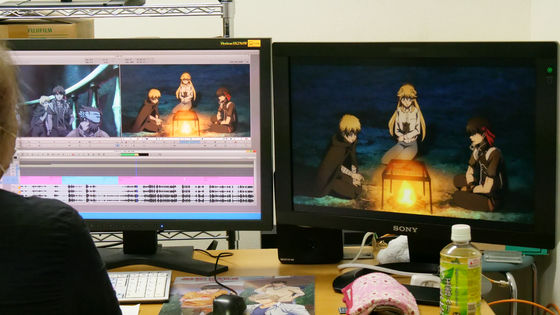
(Everyone laughs)
Onodera:
It's been about 40 years and the film era has been harder and the schedule has been harder, but this job is really fun. For example, 'Sorcerous Stabber Orphen' used to exist before this series.
G:
Yes, it was about 20 years ago.
Onodera:
Even if the same thing is repeated in the same original, the drawing method is different and the director is also different. It's different from what I do cutting and what other editors do. It's a once-in-a-lifetime meeting. That's why I never thought it was boring. Even if I do a similar work, I can't make the same thing again, so I never wanted to quit this job. It's free, so there are waves of work, but it's interesting.
G:
I see, even if you work on the same work, it's a completely different job depending on the story.
Onodera:
Since the director looks at it in total, Hamana's color appears in this work, but it changes drastically if the drawing and directing are different. Hamana-san's color shows the individuality of each director. It's fun to go along with it. In the case of 'Ophen', the original work has been supported for 25 years, so I don't know if the original color is strong, but the director's power comes out after all. I can't say that in a word, but there are things like 'Oh, this is like Hamana-san' and 'What is like a director?' 'Orphen' is my first job with Mr. Hamana, but I feel that there is. For other jobs, another director said, 'This person comes like this,' which is also interesting.
G:
There are differences for each director.
Onodera:
That's right. The individuality of the director will be added to that. There are also some interesting directors. Some people are difficult and some people are troublesome (laughs), but that's what makes it interesting. If everyone is done in a clerical way, the editing work is not interesting.
G:
I agree.
Onodera:
Therefore, I think there may be disagreements. I don't have much experience like that, but that's because it's a production site, so it's not.
G:
I have to fight my opinions firmly.
Onodera:
That's true.
G:
Earlier, you mentioned that you are working while reading the lines in editing. Is this an image that measures the tempo aloud?
Onodera:
Due to the influence of Corona, I have refrained from participating in dubbing recently, but I used to try to go as much as possible. Then, depending on the actor, the scale that I thought was good with this seems to be painful, and I can understand 'I wonder if I should make it longer next time' or 'That person is a person who can speak at a good tempo'.
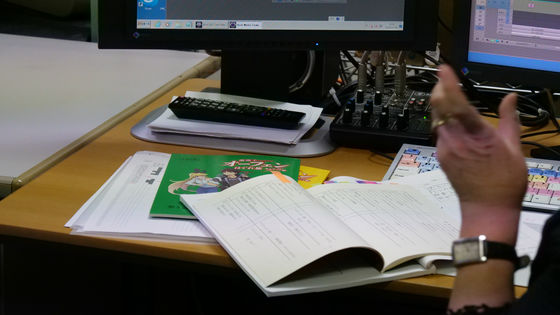
G:
So do you get the feeling of each actor and match them?
Onodera:
Due to the circumstances of the production in Corona, it was decided not to attend dubbing and dubbing, but when Mr. Effect made a good sound in dubbing, 'I see, if you do so, let's do it like this next time.' What? It's interesting that it's a synergistic effect.
G:
There is a synergistic effect here and there.
Onodera:
In 'Sorcerous Stabber Orphen', I was allowed to go to the first dubbing all the time, so I somehow understand that 'Morikubo-san and others will probably come this way.' In particular, Mr. Morikubo played the role of Orphen in the previous series, so I think he understands the work well. That's why I wasn't involved in the previous series, but it feels like Mr. Morikubo told me, 'This is what the world of Orphen is like.' 'Orphen' is a work with a lot of fans, and it is deep. It's amazing that Mr. Morikubo continues to play the leading role, and I feel that he is guiding the staff.
G:
Mr. Morikubo is pulling not only Orphen's party but also the work itself.
Onodera:
Somehow I can hear the voice, 'Oh my god!' (Laughs) There is a voice that Orphen would say so, and Krieou would return like this, Volcan and Dochin are such stupid I hear that I'm going to pinch my mouth. Actually, when editing, I guess everything, but with 'Narikiri Editing' (laughs)

G:
(Lol)
Onodera:
If it is a live-action film, it will be synchronized and the sound will be recorded, but silent editing is the fate of animation.
G:
Is it a common case that '3 minutes are over' when editing?
Onodera:
Not so much. It's a drawn picture, so it's a waste. If it's a live-action film, you can keep shooting it, so when you make an hour drama, the editing room may be filled with tapes of materials. That's normal for live action. However, since the animation was drawn by Mr. Saku, it's a waste to cut it. However, it is necessary to make something that is not possible to extend the short one, but it is helpful to shorten the long one because it is 'cut and pasted'.
G:
surely.
Onodera:
I used to edit 'Chibi Maruko-chan' in the film era, but since it's a conversational play, I had to cut down the lines if I was over the scale, so I thought it was really a waste. If it's an action item, it will cut unexpectedly, so it's okay to overrun for about a minute and a half.
G:
Mr. Onodera is in the process of editing the Kimrak edition, but has he been in charge of it since the first period, and is there any difference in the feel?
Onodera:
I worked with Director Hamana for the first time in the first term and touched 'Sorcerous Stabber Orphen' for the first time, but when it was over, I wanted to see the next one. 'What will happen to this continuation! Does it end here!' (Laughs)
G:
It's the form that I'm most worried about, that it ends when I go on a trip (laugh)
Onodera:
'What kind of place is Kimrak?' That's why I'm really excited about each episode in the Kimrak edition. Of course, all the content is up and I read it to the end, so I know all the flow, but I still have the excitement of 'What will happen next !?'. Your involvement with the work will also be different. I'm looking forward to every week.
G:
So that's it. The timing of the production of Kimrak was just influenced by Corona, but did the editing work proceed remotely?
Onodera:
I did the simple part remotely, but my job is to consult with the director and director about how to do it, so the editing work to create the work is still impossible remotely. If there is no problem with the equipment, it may be possible to solve it, but after all, it is faster to come to the company.
Studio Dean Yoshifumi Nakata Producer (hereinafter referred to as Nakata):
Animation is basically 24 frames per second, but in editing, 'I want you to cut 2 frames here', 'I want you to cut 3 frames', 'I think the previous one frame may be a bit tough'. If a communication lag occurs remotely, it will not hold, so if you are working to replace what you were doing with temporary storyboard video or line art material with a color picture after the video format work called cutting is completed. It's good, but it's difficult to set the timing and decide the content remotely.
Onodera:
It may be solved by technological progress, but now it is faster to do it at the company. You can directly ask, 'Are you sure you want to be the director?'
Nakata:
It's a task that everyone needs to do in terms of communication, because the director, director, and editor must be in harmony with each other.
G:
So that's it.
Nakata:
The Kimrak edition has become quite mysterious, as Director Hamana says. In the first period, there are quite a lot of daytime scenes and it is bright, but when it comes to Kimrak, dark scenes increase.
Onodera:
I'm going underground.
Nakata:
The content is stoic, and the way the screen is made is a little different.
Onodera:
The editing room is now equipped with this kind of equipment, but in the past there was a viewer here, and I used to 'cut and paste' the film by spinning it around. Divide the film that came up into 1 cut and 1 cut, and connect it with a tape splicer .... The first was film, which became SP tape and then Digital Betacam. This is HDcam. Then it becomes data.
G:
With the change in materials, the equipment may have changed considerably ...
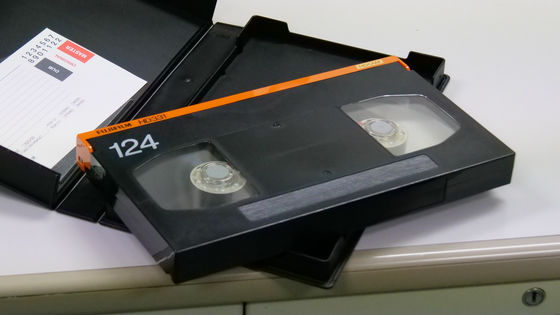
Onodera:
It was hard, I had to learn digital as a super analog person. 20 years ago? At that time, I was one of the first to go to a company that adopted digital to learn, but after all I felt that the right and left brains and the heads were used differently, and I was wondering, 'Yeah?' But you're used to it. Whether it's film or digital, it's the same image, such as 'cut and pasted', connected, cut and stretched, and how the action works when edited. In short, it's just that the tools have changed.
G:
surely.
Onodera:
Replace the part where the dubbing is over and the retake is up, and fix the lengthening. Anime is a picture, so if you want to fix it, you can fix anything, even costumes, so there are various retakes. Most of the time, it's a correction of the mouth when the lines don't match. There is quite a bit of work to fix it. As I said earlier, I can't go to the dubbing site right now, so I feel like I'm seeing Mr. Morikubo and others here.
Also, in 'Orphen', various effects are included by magic, and the effect is happy, isn't it?
Nakata:
If the details are colored or there is a background, it means that fine sounds can be added, that's right.
Onodera:
A long time ago, when I made an anime movie called 'Kamui no Ken' in the film era, Mr. Effect, who had been doing only non-color works until then, was happy to do it in color, which is rare in movies, and recorded live sounds. I went to Hokkaido (laughs)
G:
Amazing (laughs)
Onodera:
Mr. Effect really wants to do that. Besides, I think the effect of animation is more fun than the live-action work. Even if it sounds like a lie in a live-action film, it's okay to add a sound that doesn't actually exist in an anime. So I went to Hokkaido saying, 'What I couldn't usually do is now possible because of the color!' There was such a thing, so what I want to tell the production is 'I want to do it in color!' (Laughs)
G:
(Lol)
Onodera:
I said 'cut and pasted', but it really depends on the drama, so it doesn't mean 'it should be long'. So, as you can see from various perspectives, it's not just that the format is short and the length is extended.
G:
So that's it. The length of the main story is 20 minutes and 30 seconds, but how long does it take to work?
Onodera:
The replacement work is right. I wonder……. As for the replacement itself, if there were 300 cuts in all-line shooting, I think that it would be replaced about 5 times, so maybe 1500 or more. However, not only is it a difficult replacement, but there are also things that you can easily do once you get used to it. I haven't measured the time, but it's about three times as good as the one ...?
G:
Even if everything goes well, it's tripled ...
Onodera:
When I used to do a work by another company, I used to take a line shot and edit it with the original shot, but the original shot with the animation director and the original without it. I have a photo shoot. It's not like 'Orphen', but that work was replaced even in line shooting. Even if we look at it, the difference is about 'what's the difference?', But the animation director made some changes, and 'Onodera-san, the animation director did his best to make a good picture. Please replace it with the original shot. ' That's right, the painter drew it, and the photographer took it. Then I think I should add editing. I took line shots about 3 times and asked, 'Are you still doing it?' However, as the producer said, replacing even one cut will help the person who makes the sound, and the movement will be easier when it comes to the actual shooting, so I said 'I understand'. It was. On the other hand, some companies don't spend that much money on line shooting. If it's color, there's nothing wrong with it (laughs)
G:
After all, there (laughs)
Onodera:
There are various ways to fix this as well, with the idea of fixing it after it becomes color. The more you do, the better you do, like solving puzzles, one cut and one cut. Woven fabrics spin threads, but the process of changing from line-taking to color is the same as that, and it feels like spinning one by one. When we love the work, it will be returned. That's fun.
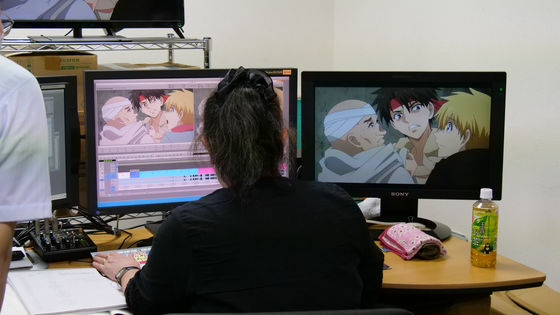
G:
It's the first time I've heard so much about the job of editing, but I didn't know it would be such a fun job.
Onodera:
I guess so. I've always had it as a talisman, but I used it.
G:
Oh!
Onodera:
Clothespin at the time of film. In the West, we use Western scissors. I was cutting and scraping negatives. This is the one I used towards the end, so I don't know how many chome it has been since I made my debut as an editor (laughs).

G:
Amazing ...
Onodera:
When I was filming, I also carved the cut numbers directly. Keiichi Uraoka, my editorial teacher, was a live-action fielder, but when I was editing in France, I brought a clothespin with me. Then all the French editors asked, 'What is that?' The people over there were using Western scissors and using a stylus to carve. However, clothespins can be cut, scraped, and chopped in one step. It's not necessary in the digital age, but it's like a talisman.
G:
Is there any advice that you should acquire these skills for those who want to edit from a career that has passed the times from film to digital?
Onodera:
It's more about seeing things than skills. I think that each person has a 'film feeling', for example, that he likes this rhythm of cutting and feels good. By looking at various works, you will be able to understand that it suits you and that it does not suit you. 'This work is interesting, but it's not my rhythm.' It would be great if you could gain such experience and understand your own 'film feeling'. Moreover, when it comes to work, it is not self-satisfaction, but it is necessary for people to see and enjoy it, so it is necessary to 'show it well.'
G:
Hmmmm.
Onodera:
To that end, the first thing to do is to understand what is justice within you. What we do to get there is just to see. It's not just anime. People who do anime shouldn't just watch anime. Watch live-action, documentaries, commercials, whatever. As a theory for editing, for example, there is something about imaginary lines, but before that, if you found out that 'this is unpleasant in my sense', I 'cut and pasted'. When I start to do it, it goes smoothly, and I think I can make a work that people can understand.
G:
So that's it.
Onodera:
It wasn't such a good time in the past, because I had to go to the cinema to watch movies, and I had to buy videos to watch them. When I was a student, I saw old movies, black and white, and silent ones. Silent is very interesting. The rhythm is different from now, but it will be a learning experience because it will be shown only in the video. Also, the stage is good. Live stage.
G:
Is it also the stage?
Onodera:
If you do animation, there are problems such as dialogue, so I think it's better to watch the live stage. Maybe it's anime-like. 'In such a situation, it feels better to get out of the scone.' 'Is there such a way of showing?' 'I think this kind of connection is better here.' To get there, look a lot, don't like it. This.
G:
Not 'this work', but various things.
Onodera:
That's right. It cannot be said that only masterpieces are good. Because it leads to my 'like' in unexpected places. Looking at this director's work, it was also interesting, and it would be nice if we could connect that kind of thing. Nowadays, it's easy to watch movies, so I think it's a good idea to do it.
It was a dream for me to be able to watch movies all the time. I used to go to the film center to see it. There is a center in Kyobashi, and you can see past masterpieces for about 100 yen. It was cheap because it was a national movie, and it featured a movie from the golden age of Hollywood, which was borrowed from a film center in the United States.
G:
There are many ways to see it today.
Onodera:
If that happens, you can always see it, so you may not see it (laughs)
G:
There is (laugh)
Onodera:
If you look at it a lot, you will naturally learn how to make your body look easy to understand, so don't like it or hate it. Actually, my senior is a sportsman, and the image of the person himself is the type that takes action no matter how you look at it, but as an editor, he was the type who put up with the cut very much. Even if I'm already cutting it, I'm looking closely. Although he was a live-action person, he was good at more careful works than action ones when he did animation. On the other hand, people who seem to be unfussy are good at editing action things.
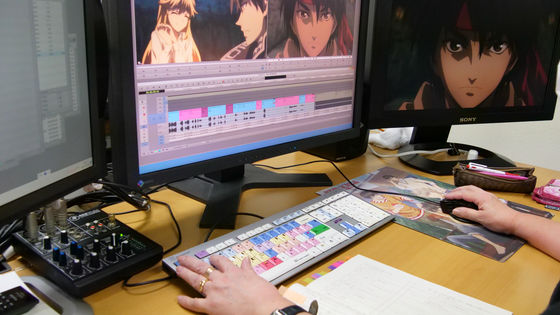
G:
So that's it. Thank you for a long time from 'Orphen' to editing.
The anime 'Sorcerous Stabber Orphen Kimrak Hen' will start broadcasting on January 20, 2021 (Wednesday).
'Sorcerous Stabber Orphen Hagure Journey Kimrak Hen' Anime PV 2nd --YouTube
©秋田禎信・草河遊也・TO ブックス/魔術士オーフェンはぐれ旅製作委員会
Related Posts:









